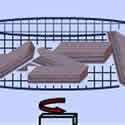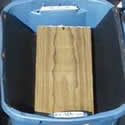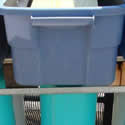Laboratory Leaching Tests
Leaching tests are commonly used as a component of biological laboratory test protocols, and as a standalone indicator test for permanence of preservative components in treated wood.
The laboratory methods usually involve the immersion of small wood blocks in beakers of water, which are held for a defined time period, often around 2 weeks, before removal and reanalysis to determine percent preservative component loss. The methods usually involve periodic changing of the water, and may also involve continuous stirring of the water solution throughout the test period.
In a number of the protocols, the wood blocks are analyzed for preservative components before and after the leaching period, while analysis of the leaching water solution is also often carried out as a second measure of preservative component loss. Correlation between these two measures is often less than desired.
The AWPA leaching test method is found in AWPA Standard E11, while the Japanese procedure is embodied in JIS Standard K 1571. A further leaching procedure can be found in AWPA Standard E20 (available from the AWPA). The European methods are found in EN 84 and ENV 1250, while a number of other methods are found in individual countries within Europe. The Australasian procedure can be found described in the AWPC Protocols.
Images
References


